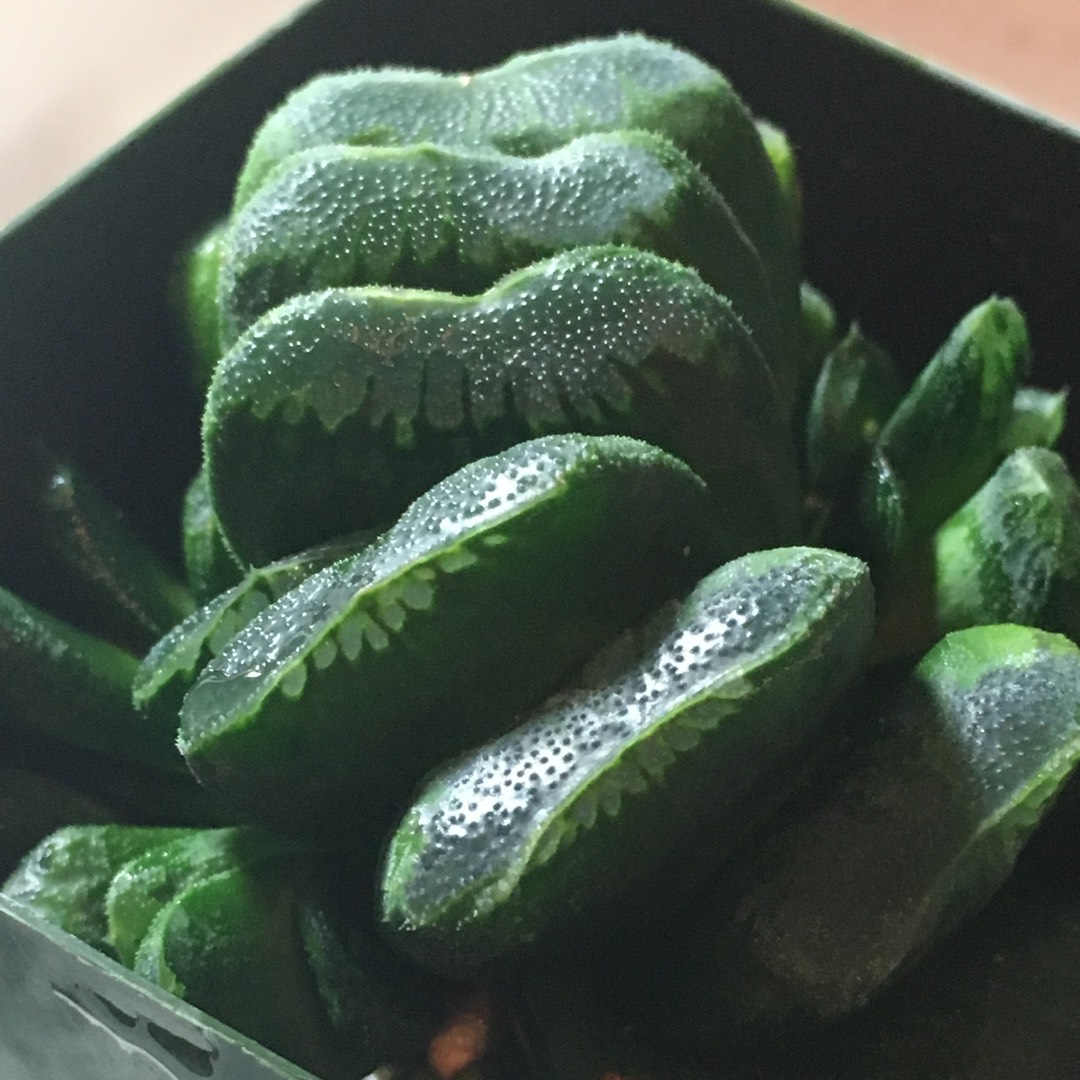
Haworthia truncata hybrid 'Black Coral'
Black Coral Haworthia
Haworthia generally resemble miniature aloes, except in their flowers. They are popular garden and container plants. The plants can grow solitary or can be clump-forming. Their flowers are small, white and very similar between species. But their leaves show wide variations. 'Black Coral' are small plants, being approximately 2 cm high by 10 cm wide. The leaves have a nearly rectangular cross-section and are arranged in two opposite rows. The leaves are grey and are covered in white or gray lines with verrucosities.
-
Partial shade
-
Very little water
-
Frost Hardy: 23F (-5°C)
-
Free draining
Common name
Black Coral Haworthia
Latin name
Haworthia truncata hybrid 'Black Coral'
type
Succulent
family
Asphodelaceae
ph
5.0 - 7.0 Acid - Neutral
Plant & bloom calendar
-
Best time to plant
-
When the plant will bloom
full grown dimensions
 0.10 M
0.02 M
0.10 M
0.02 M
Haworthia truncata hybrid 'Black Coral'
Haworthia generally resemble miniature aloes, except in their flowers. They are popular garden and container plants. The plants can grow solitary or can be clump-forming. Their flowers are small, white and very similar between species. But their leaves show wide variations. 'Black Coral' are small plants, being approximately 2 cm high by 10 cm wide. The leaves have a nearly rectangular cross-section and are arranged in two opposite rows. The leaves are grey and are covered in white or gray lines with verrucosities.
Flowering Season
From Mid Summer TO Mid Summer
Haworthia and Haworthiopsis will produce flowers, usually a few weeks after the "longest day" of the year, i.e. in Summer. However the flowers aren't very exciting, although because Haworthia and Haworthiopsis are very slow and compact plant not much happens visually during the year therefore the flowering period can be a welcome treat to show that your plant is actually "alive".
Planting Young Plants
From Early Spring TO Early Spring
When you re-pot your Haworthia or Haworthiopsis you can separate the offsets from the parent. Use a sharp knife and cut as close to the parent plant as possible, ensure the offset has some roots. Wait a day for the offset to dry slightly then pot up in a small container using a standard potting or cactus compost mix. Water and keep warm.












